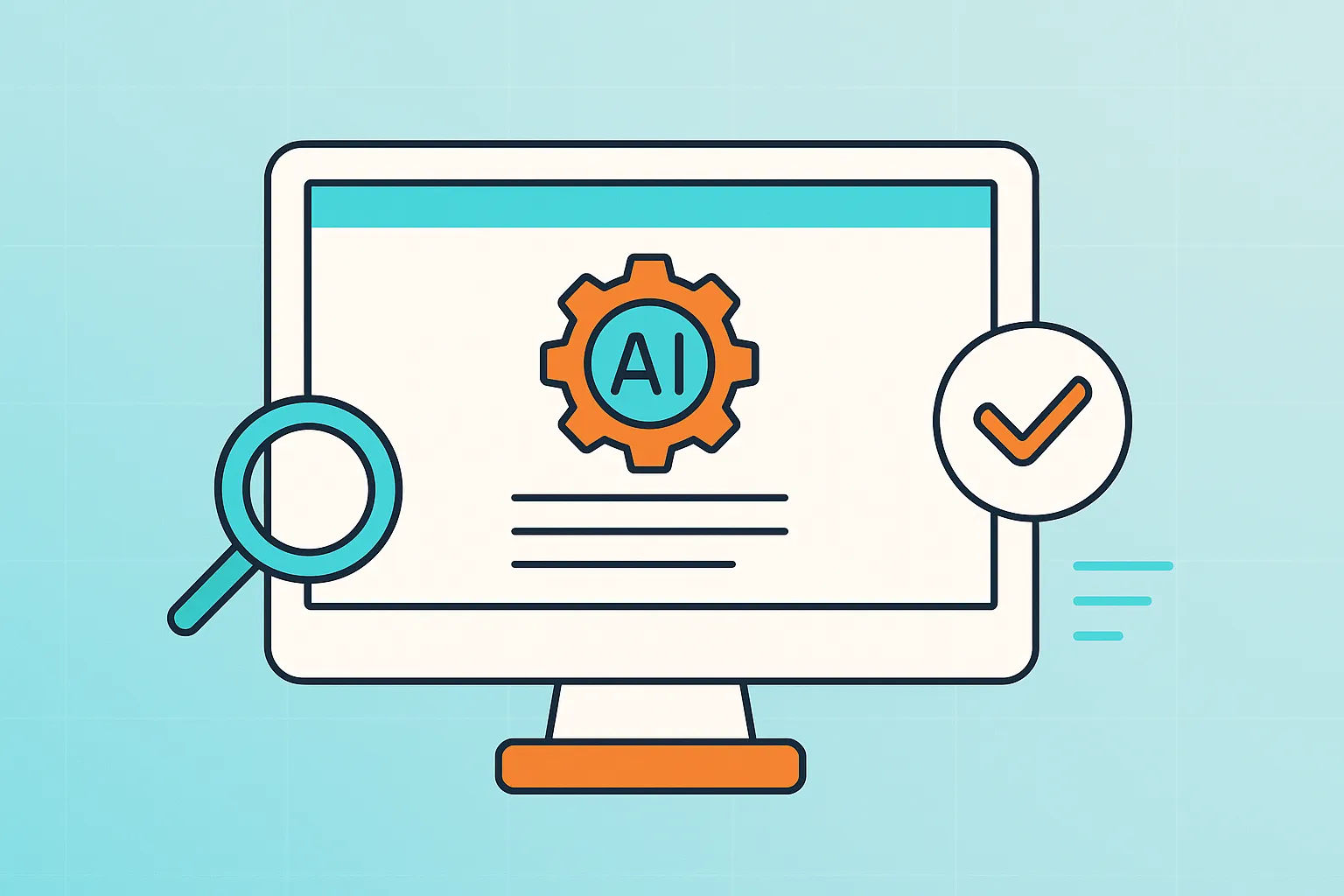The New Frontier of Software Quality: AI-Powered Testing
In today’s fast-paced digital landscape, the pressure to deliver flawless software at unprecedented speed has never been greater. Traditional manual testing, while valuable, is often a bottleneck—a slow, resource-intensive process prone to human error. Even early forms of automated testing struggle to keep up with the complexity and scale of modern applications. This is where Artificial Intelligence enters the software development lifecycle (SDLC), not as a mere enhancement, but as a revolutionary force fundamentally reshaping our approach to quality assurance.
AI in software testing is about more than just running scripts faster. It represents a paradigm shift towards a more intelligent, predictive, and efficient quality engineering process. AI-powered testing tools can analyze vast datasets, spotting unobvious patterns and anomalies that even the most meticulous human testers might miss. They handle the repetitive, time-consuming tasks that drain engineering resources, freeing up developers to focus on innovation and complex problem-solving. Platforms like Testim, Mabl, and Katalon have emerged as leaders in this space, leveraging AI to offer capabilities that were once the realm of science fiction.
Choosing the right AI testing platform, however, is a critical decision with long-term implications for your engineering velocity, product quality, and competitive edge. It’s not just about adopting a new tool; it’s about integrating an intelligent system into your development workflow. This guide will evaluate the core features and benefits of leading AI testing tools, providing the insights you need to understand the landscape and make the right choice for your team’s unique requirements.
Intelligent Test Automation and Optimization
The most immediate and tangible benefit of integrating AI into the testing process is the dramatic enhancement of test automation. Traditional automation requires significant manual effort to write, maintain, and update test scripts. As an application evolves, these scripts often break, leading to a frustrating cycle of maintenance that consumes valuable engineering time. AI-powered frameworks address this challenge head-on by introducing a new level of intelligence to the automation process.
Automated Script and Data Generation
A cornerstone of modern AI testing platforms is the ability to automatically generate scripts. An AI-powered testing framework can analyze an application’s user interface and user flows to create robust test cases with minimal human intervention. This capability radically reduces the initial setup time and technical expertise required to build a comprehensive test suite.
Furthermore, Generative AI takes this a step further by autonomously generating test cases based on the software’s specifications. It can also create diverse and realistic test data, a task that is often tedious and complex when done manually. By simulating a wide variety of inputs, AI ensures that algorithms and data processing components are tested against a comprehensive range of scenarios, verifying that outputs consistently match expected results. This automated generation of both tests and data ensures more thorough coverage from the very beginning.
Dynamic Test Execution and Maintenance
Beyond generation, AI excels at the ongoing optimization and execution of these test cases. An advanced AI framework can automatically optimize a test suite, prioritizing tests based on risk, recent code changes, or historical failure rates. This ensures that the most critical paths are always tested first, providing faster feedback to developers.
AI also brings unparalleled precision to test execution. AI-powered tools are designed to ensure that the same test produces the same result every single time it’s run, eliminating the flakiness that can plague traditional automation frameworks. This consistency is crucial for building trust in the automated testing process. When a test fails, teams can be confident that it has identified a genuine bug, not a transient issue with the testing environment or script.
Enhanced Defect Detection and Test Coverage
One of the most profound impacts of AI in testing is its ability to see what humans cannot. Human testers, no matter how skilled, are limited in the amount of data they can process and the subtlety of patterns they can detect. AI, on the other hand, is built to analyze vast datasets and identify correlations that are invisible to the naked eye.
Uncovering Hidden Anomalies
AI-powered testing tools leverage machine learning to spot unobvious patterns and anomalies that human testers often miss. By analyzing application behavior, user interaction logs, and performance metrics, these systems can identify subtle deviations from the norm that may indicate an underlying defect. For example, AI can identify repetitive issues and patterns across hundreds of test runs that might signal a systemic problem, allowing teams to catch bugs early in thedevelopment cycle before they escalate into major issues for users.
This analytical power extends to real-time monitoring. AI-powered monitoring tools can analyze the immense amounts of data generated by modern software, from server logs to user interactions. They use machine learning algorithms to establish baselines of normal behavior and then flag any subtle deviations. This proactive approach helps in predicting potential problems based on historical data and patterns, transforming quality assurance from a reactive to a predictive discipline.
Intelligent Test Coverage Analysis
Ensuring adequate test coverage is a persistent challenge in software development. It’s difficult to know if you’re testing all the right things, and gaps in coverage often lead to bugs slipping into production. AI directly addresses this by analyzing vast amounts of data—from the codebase itself to user behavior analytics—to identify potential gaps in test coverage. This data-driven approach allows teams to intelligently expand their test suites, focusing their efforts on the areas of the application that are most critical and least tested. The result is a more robust and reliable application, built on a foundation of comprehensive quality assurance.
Accelerating the Entire Testing Cycle
Speed is a critical competitive advantage, and AI is a powerful accelerator for the entire testing lifecycle. By automating and optimizing time-consuming tasks, AI enables teams to run more tests, more often, without slowing down development.
High-Speed Execution and Parallel Testing
AI excels at executing repetitive tests and simulations at an accelerated pace. Tasks that would take a human tester hours or days, such as running hundreds of regression tests, can be completed by an AI in a fraction of the time. This speed is further amplified by the ability to run tests around the clock, maximizing the use of testing resources and providing continuous feedback to the development team.
One of the most significant speed enhancements comes from parallel testing. AI automation can execute tests concurrently across multiple environments, browsers, and devices. This capability is essential for modern applications that must function flawlessly on a wide array of platforms. Instead of running tests sequentially, which can be incredibly time-consuming, AI enables teams to cover multiple scenarios at once, drastically reducing the time required to get a comprehensive quality signal.
Efficient Environment Management
Setting up and managing test environments is another common bottleneck. AI-driven automation can swiftly provision the required test environments, configure them with the necessary dependencies, and populate databases with relevant data. AI is particularly adept at managing environment variations, ensuring tests can be run against different user configurations, languages, and regional settings without manual intervention. For complex systems, such as e-commerce platforms, AI can rapidly configure environments to replicate different payment scenarios, streamlining data management and ensuring that every permutation is thoroughly tested.
Advanced Risk Assessment and Security Testing
Beyond functional testing, AI is increasingly being used for more sophisticated quality assurance tasks, including risk assessment and security testing. By simulating complex, real-world conditions, AI can uncover vulnerabilities and assess an application’s resilience in ways that are difficult, if not impossible, to achieve with traditional methods.
Proactive Risk and Vulnerability Detection
AI can simulate a variety of scenarios for comprehensive risk assessment. By emulating real-world conditions and user behaviors, it can uncover vulnerabilities that might only surface under specific, hard-to-replicate circumstances. For example, AI can simulate extreme conditions like low memory or poor network connectivity to see how the application behaves under stress.
This predictive capability is powered by historical data and trends. By analyzing past incidents and performance data, AI can predict risks and highlight areas of the application that may be prone to failure. This allows teams to proactively address potential weaknesses before they impact users.
Simulating Security Threats
In the realm of security, AI provides a powerful toolkit for assessing an application’s resilience to potential threats. AI can simulate sophisticated attacks, such as DDoS attempts or unauthorized access, to test security measures in a controlled environment. This allows teams to identify and patch security holes before they can be exploited by malicious actors, ensuring that the application is not only functional and reliable but also secure.
Why Choosing a Tool Is Not Enough: The MetaCTO Advantage
Understanding the features of platforms like Testim, Mabl, and Katalon is the first step. The next, and arguably more critical, step is successfully integrating these powerful tools into your engineering culture and workflows. This is where many organizations falter. Adopting a sophisticated AI testing platform isn’t a simple plug-and-play operation; it requires strategic planning, technical expertise, and a deep understanding of how to align the tool’s capabilities with your business objectives.
At MetaCTO, we specialize in AI app development and have over 20 years of experience launching more than 100 applications. We’ve seen firsthand that the success of any AI initiative hinges on a holistic strategy, not just the technology itself. Simply purchasing a license for an AI testing tool without a clear plan for implementation, training, and measurement often leads to disappointing results and wasted investment.
Our role is to serve as your strategic partner, guiding you through the complexities of AI adoption. We help you move beyond the hype and make data-driven decisions. Choosing the right testing platform is part of a much larger journey towards AI maturity. It involves assessing your team’s current capabilities, identifying gaps, and building a clear roadmap for progress. This is the core principle behind our AI-Enabled Engineering Maturity Index, a framework designed to help organizations systematically advance their AI capabilities across the entire SDLC. By working with us, you gain access to the expertise needed to not only select the best tool but also to embed it within a culture of continuous improvement and measurable results. We help you build the processes and governance structures required to unlock the full potential of AI, turning your investment into a true competitive advantage.
Conclusion: Making a Strategic Choice for Quality
The shift towards AI-powered testing is no longer a future trend; it is a present-day necessity for any organization serious about software quality and development velocity. The capabilities offered by modern AI testing platforms—from automated script generation and intelligent defect detection to accelerated execution and advanced risk assessment—provide a decisive edge in a competitive market. Platforms such as Testim, Mabl, and Katalon are at the forefront of this transformation, offering robust solutions to streamline and enhance the quality assurance process.
However, this article has shown that the power of these tools lies not just in their individual features but in how they are strategically implemented. The journey involves more than a feature comparison; it requires a deep evaluation of your team’s needs, existing workflows, and long-term goals. The ultimate goal is to create a seamless, intelligent testing ecosystem that catches bugs earlier, accelerates feedback loops, and frees your engineers to focus on building great products.
Navigating this landscape can be daunting. Making the right choice requires a blend of technical insight and strategic vision. If you’re ready to harness the power of AI to elevate your testing strategy and drive engineering excellence, the next step is to speak with an expert who can help you chart the course.
Talk with an AI app development expert at MetaCTO to build a quality assurance strategy that delivers measurable results and positions your team for success.

